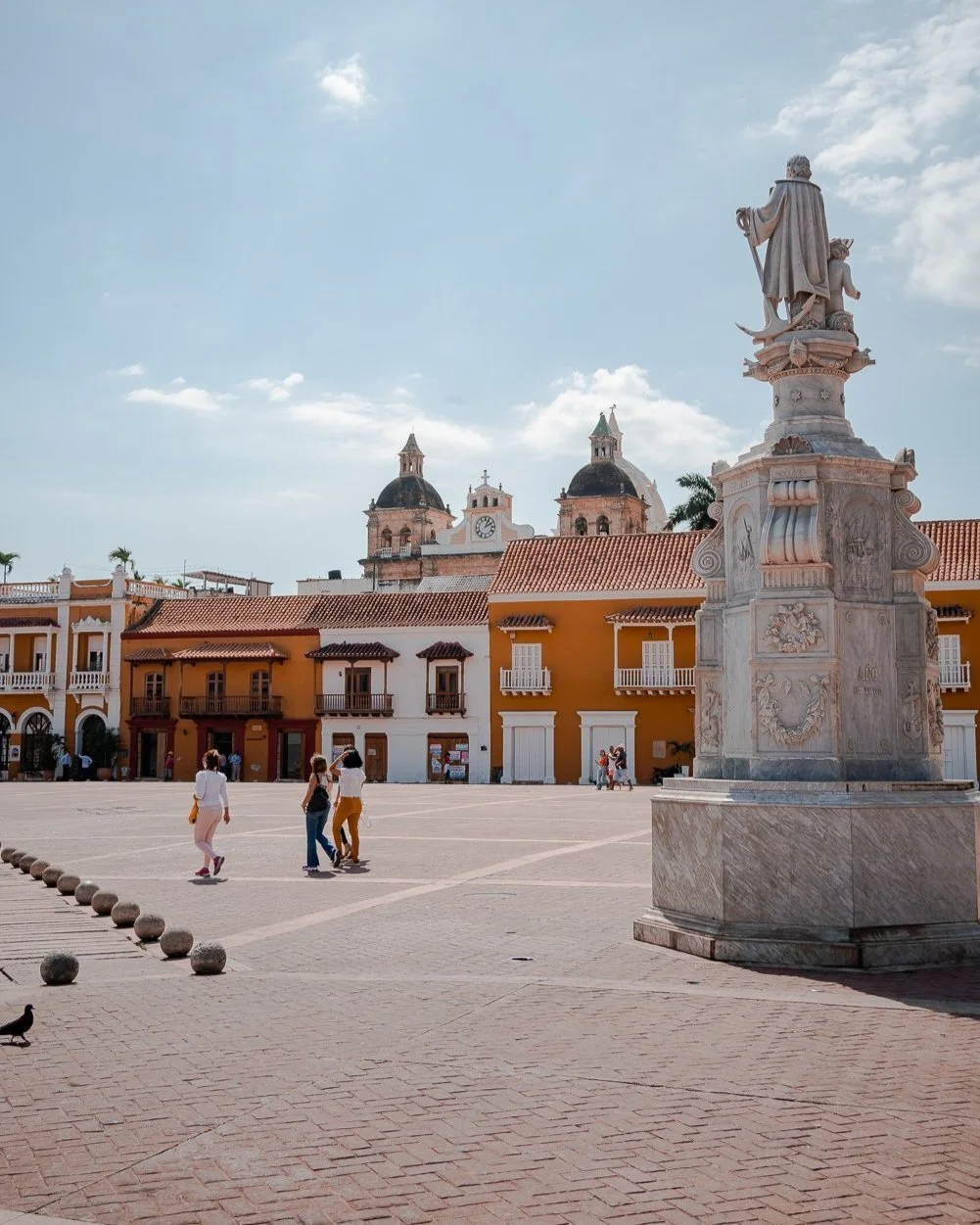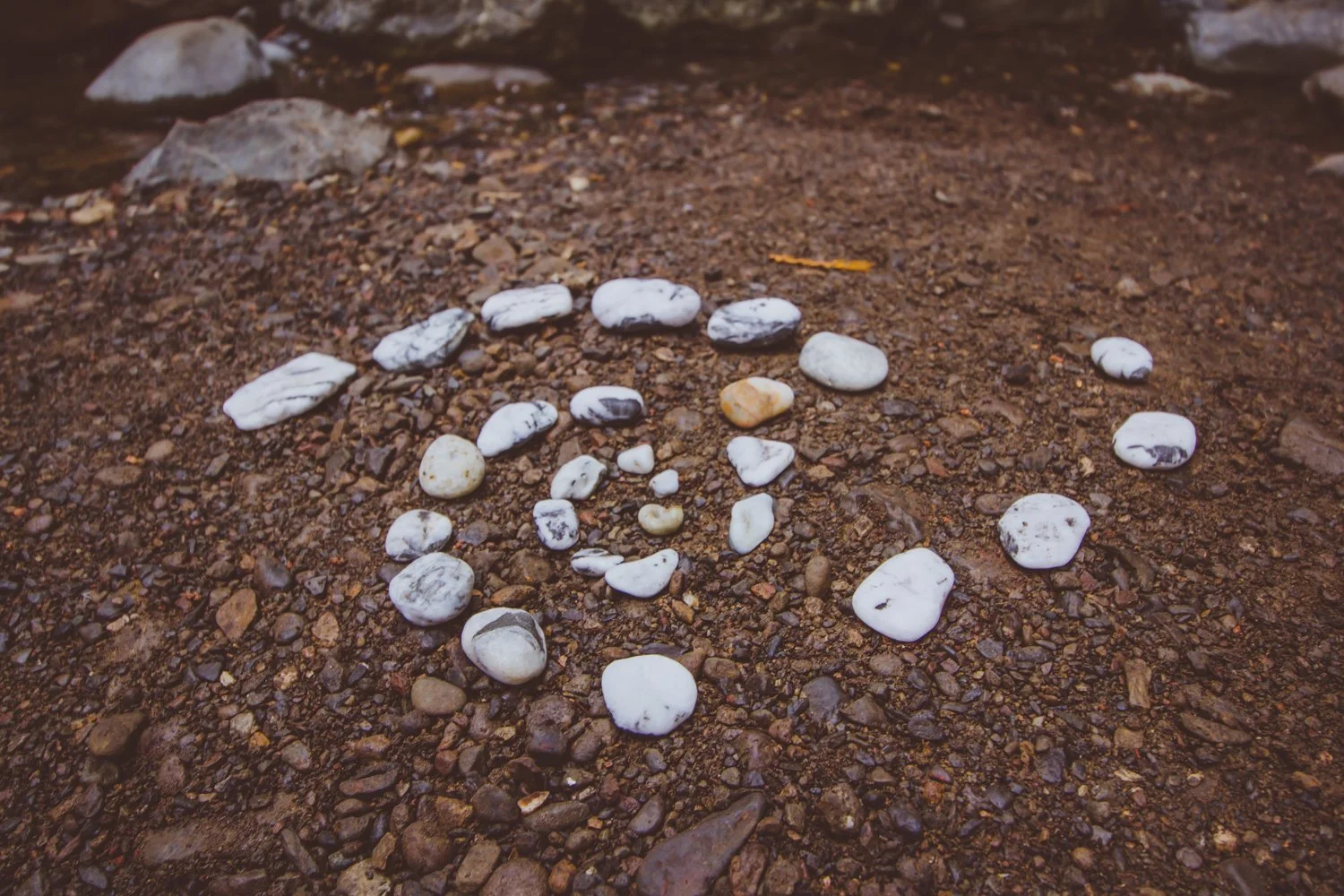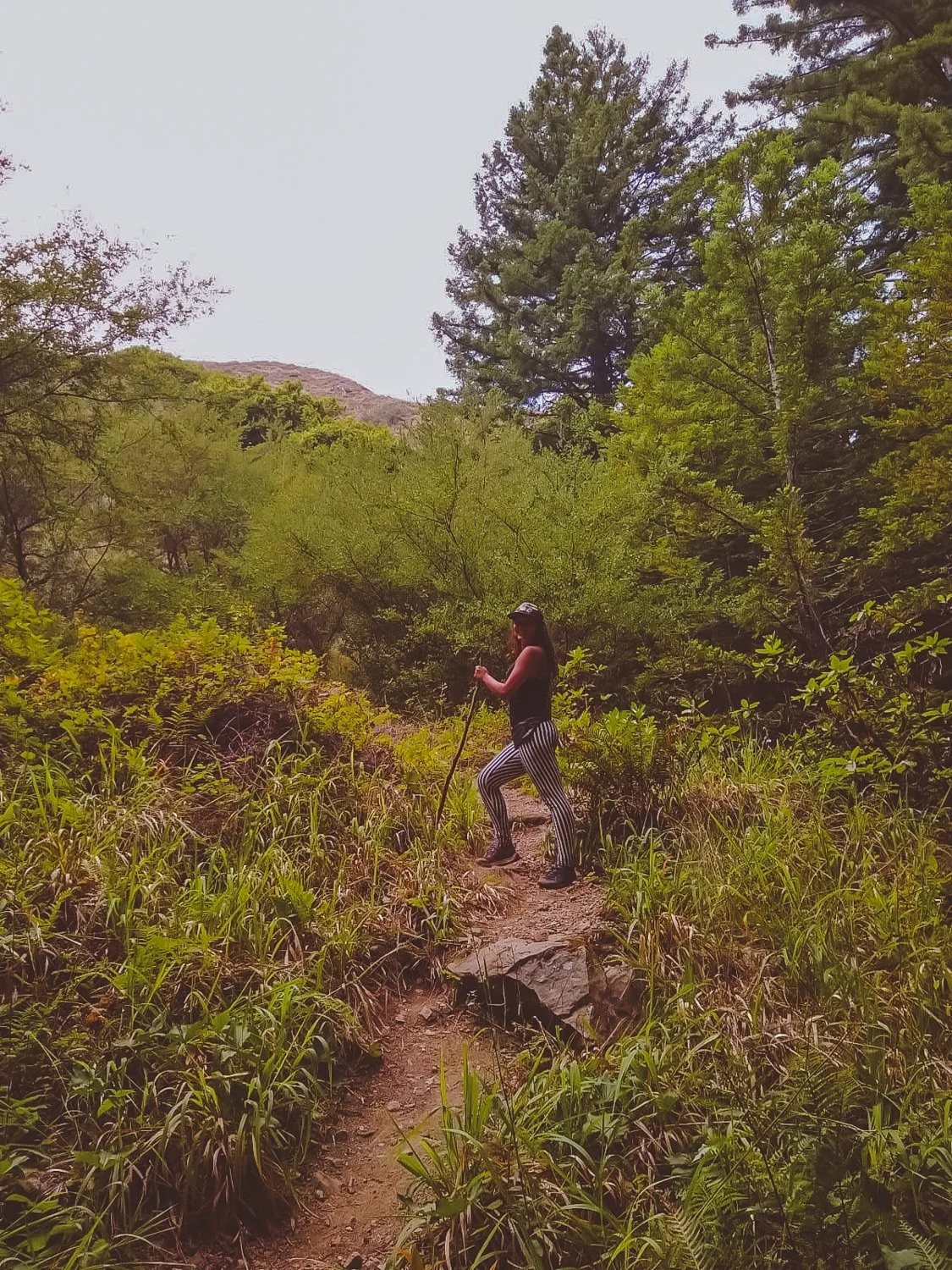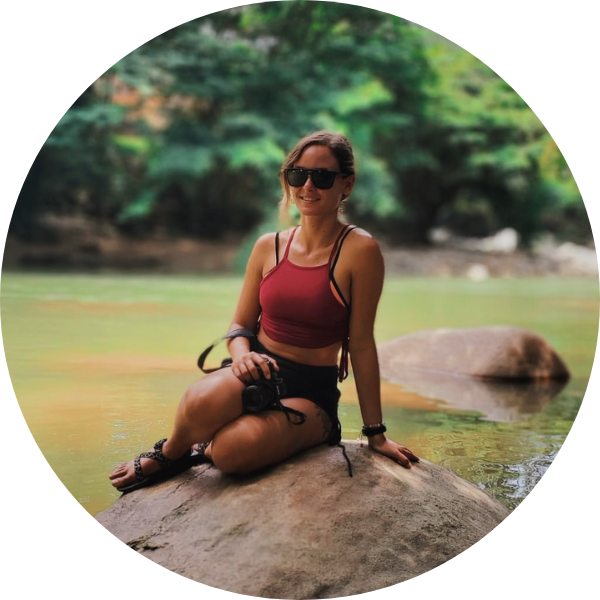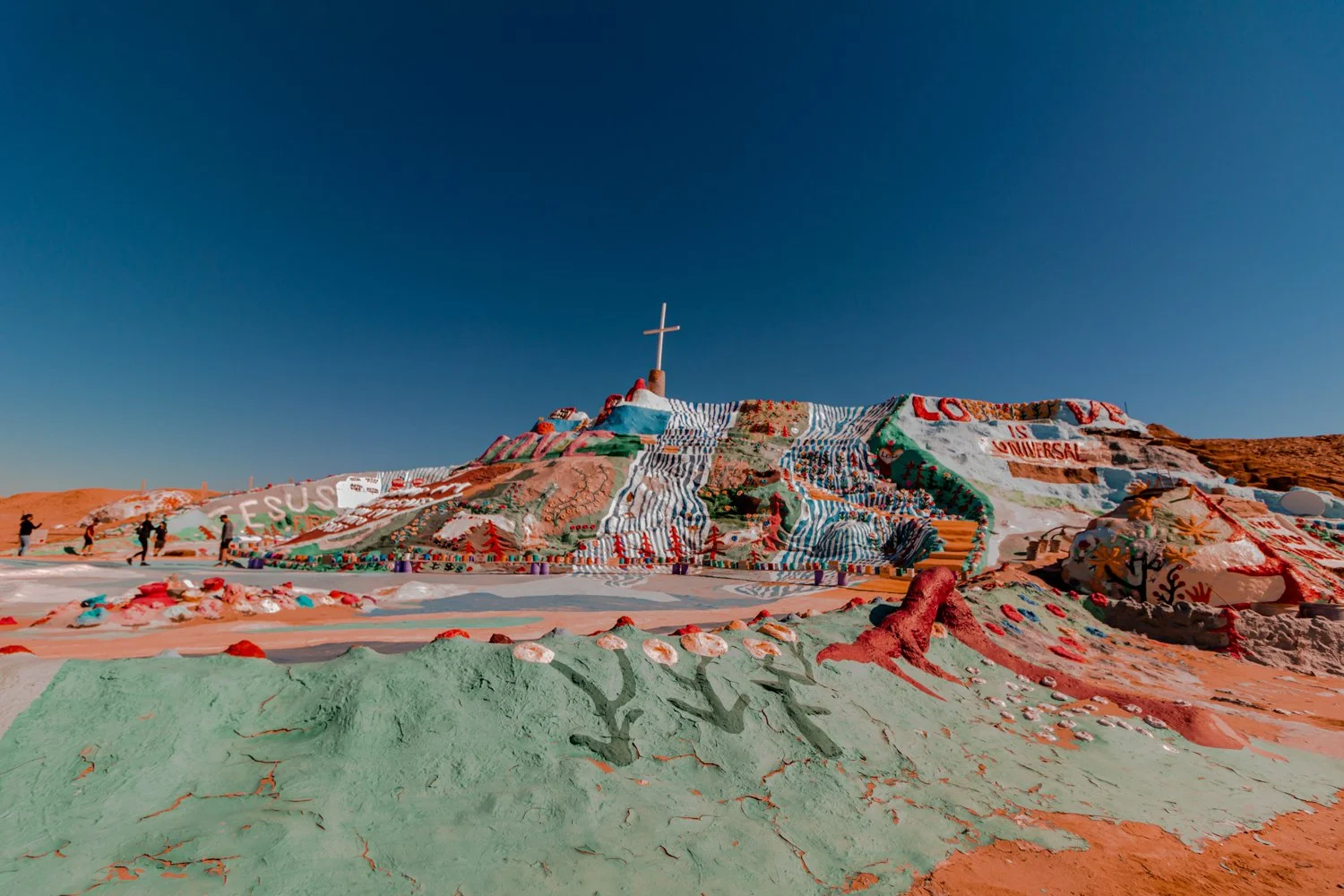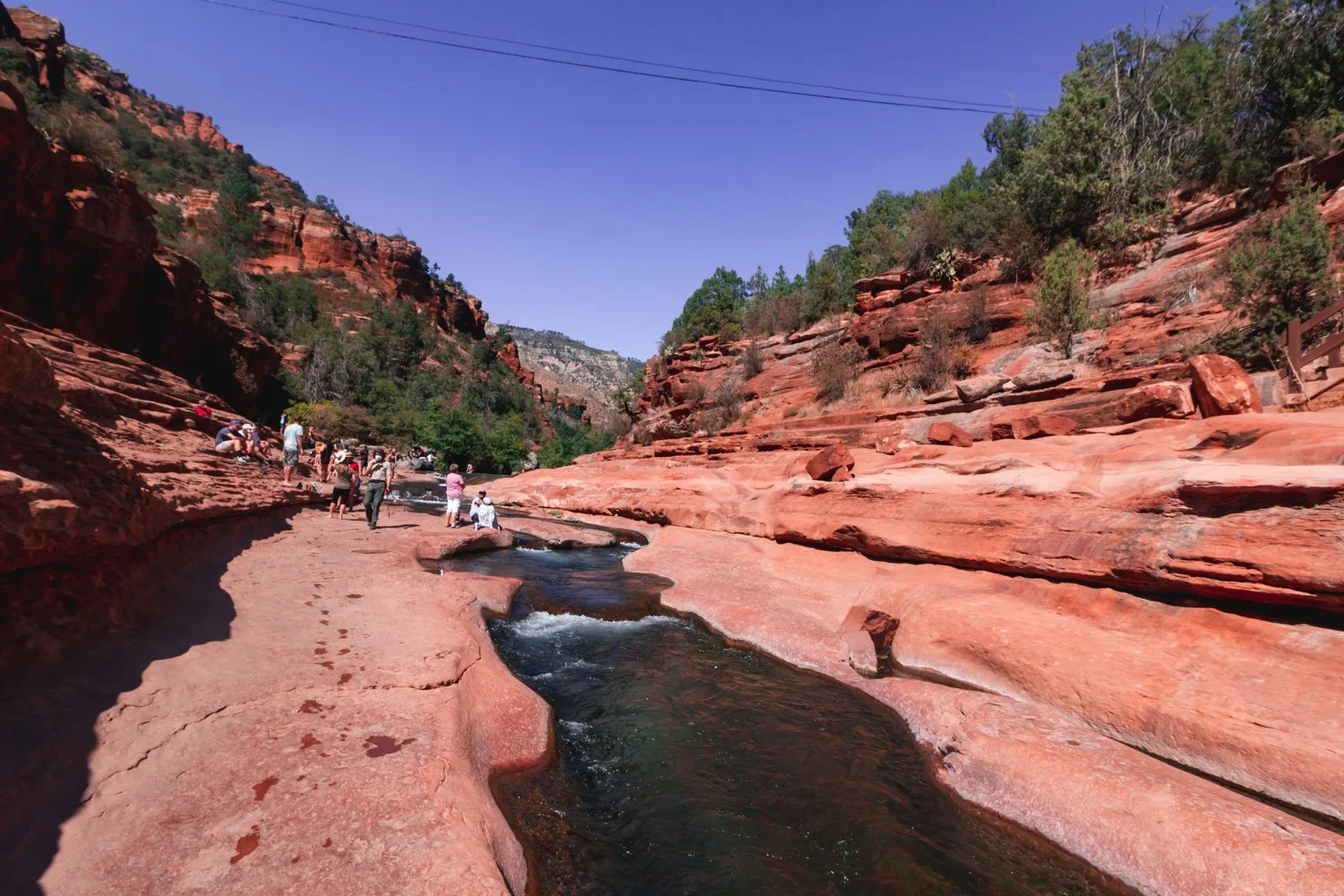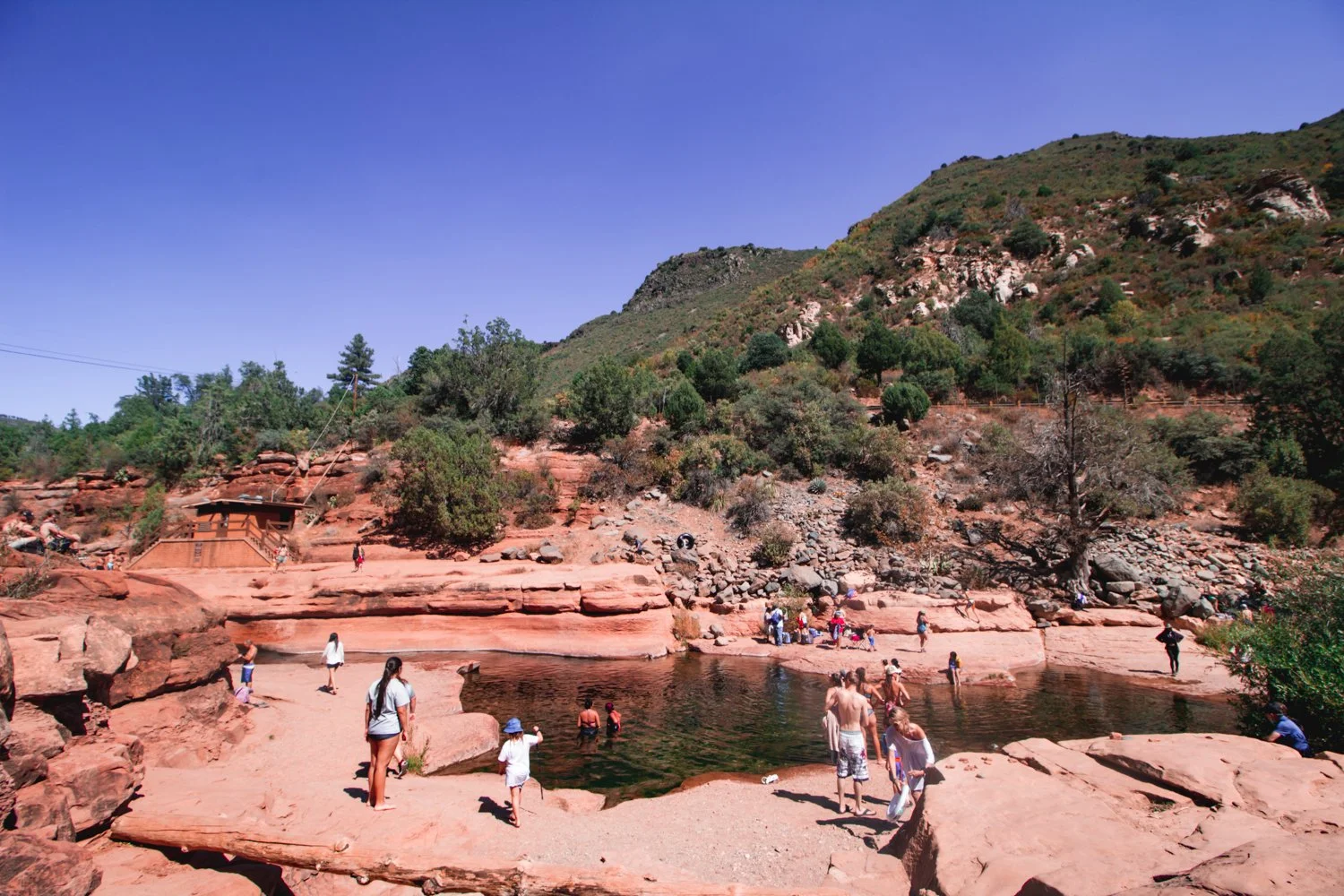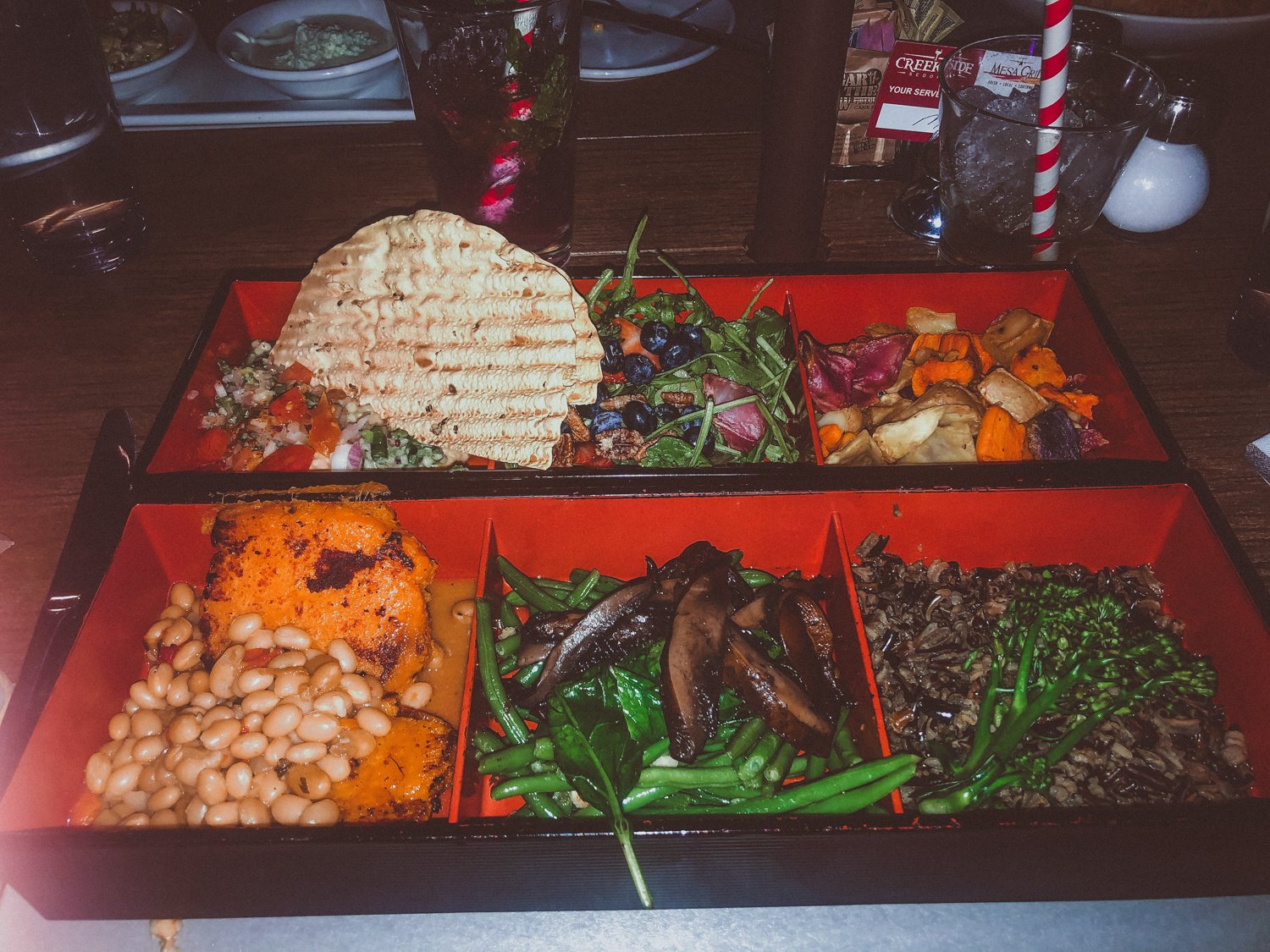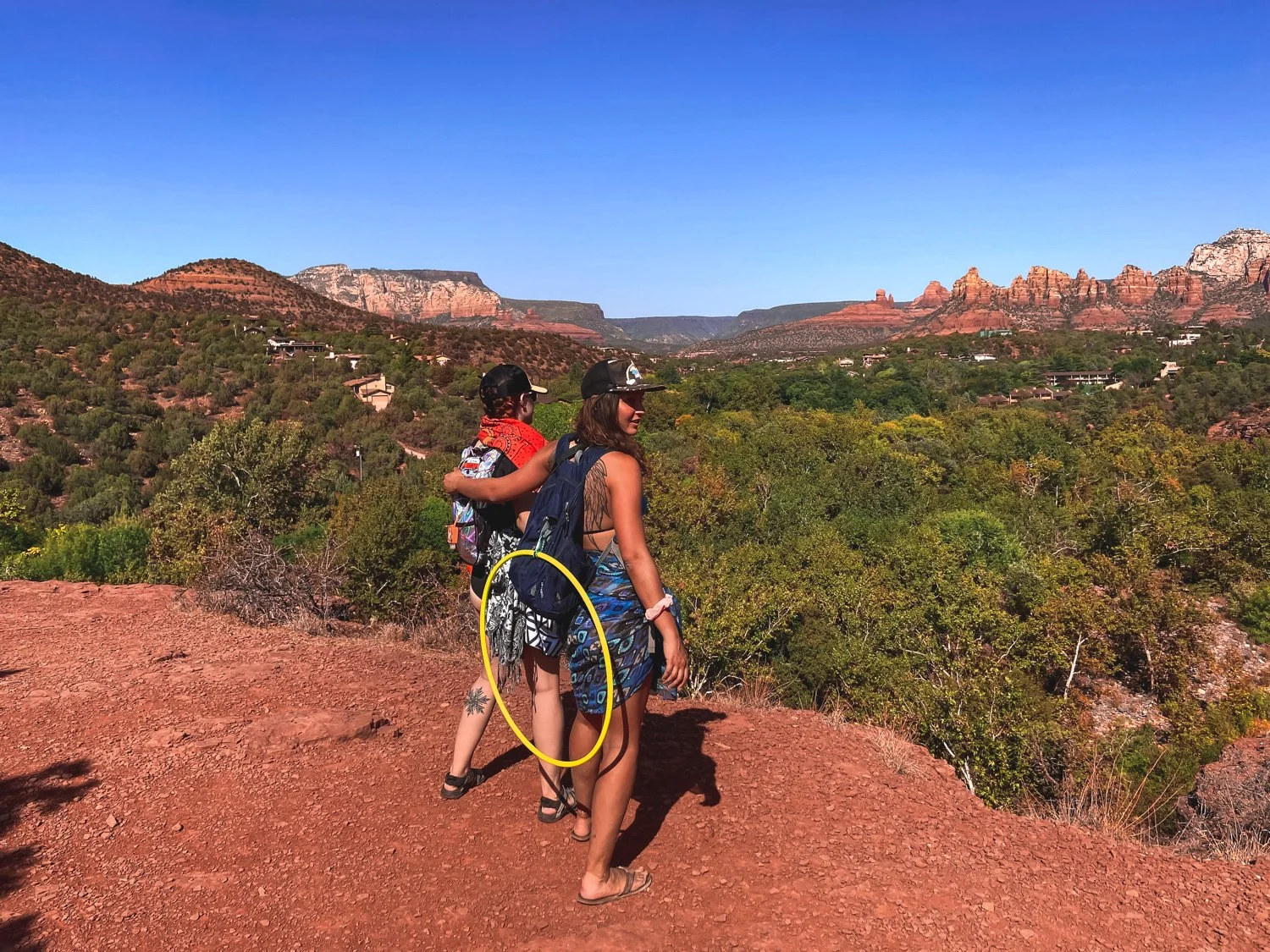The guide with EVERYTHING you need to plan your trip to the ever-growing coffee region - including full itineraries, which towns to visit, how to get around, what to pack, and more.
13 Most Wonderful Things to Do in Jardin, Colombia
11 Free Things to Do on your Big Sur Drive in California
Are you heading on a Big Sur drive soon? Do you love waterfalls, hiking, beaches, wildlife…
…and being out of contact from the rest of the world?
Then read on because I am about to share my secrets with you, fellow budget traveler, with these 11 free things to do along the remote coast of Big Sur, California.
I’m a California native who has driven allll the way up and down our large state (from Mexico to Oregon and back) several times - both on my own and with friends.
I’ve written this article from my own recent experience doing the Big Sur drive post-pandemic with a friend. The untouched beach bluffs that greet you with a different personality every morning remain a photographer’s dream!
Note: Before you hit up these free things to do on your Big Sur drive, you absolutely need to make sure you have maps downloaded offline since the internet will not work at all on this remote coast. You can use the free app maps.me to download the map of California. Make sure you save all these locations beforehand, so you have all the hiking trails and campsite locations. You’ll need them.
Now, get ready to hit the road!
Your Big Sur drive is the place to unplug, get lost, and find your spirit along the unforgiving coastline.
The Mystical Big Sur drive
Dark, brooding beaches exist without another pair of footprints in sight.
Purple sand sprawls next to thick sea stars chilling on rocks, while miniature crabs scuttle about.
Sparkling lime waterfalls surprise hikers at the end of miles and miles of overgrown forest trails.
And bushels of poison oak claw at you from every corner.
I spent 5 days with no cell service exploring the longest stretch of undisturbed coast in the United States: Big Sur, California.
90 miles along Pacific Coast Highway 1 in Central California from Carmel to San Simeon brims of rocky beaches with character and redwood mountains so steep they’ll bang up any car smaller than a Jeep.
Upon arrival, it is easy to understand why Big Sur glitters majestic.
For rugged campers or backpackers, the solitude experienced on the Big Sur drive is a dream. You must have an offline map to find your way around the less-visited landscape, while families will probably stick to the state parks.
Besides privacy, the preservation of the area maintains that Big Sur will always stay true; the flora and fauna will (hopefully) continue to flourish, and it gives people a chance to see how beautiful California would be without infrastructure.
Lastly, Big Sur wows due to its affordability. If you are craving a getaway and know how to pitch a tent, you can visit Big Sur for the price of food and gas.
I will note that state parks charge $10 for cars, but there are ways to get in free as well which I will detail below.
Ok Wolfette, here are 11 free things to do on your Big Sur drive in California, from a local:
11. Observe the Elephant Seals in San Simeon
Location on Google Maps: Elephant Seal Vista Point
Those aren’t rocks… they’re elephant seals laying down!
Our first Southern stop on the way to Big Sur proper was an unexpected turn at the Elephant Seal viewing area in San Simeon.
Don’t let the mellow photo fool you. These elephant seals play-fought in the water together and bounced along the shores until we experienced cuteness overload.
Yes, it’s free like everything else on this list. You’ll just stop on the side of the highway for your up close encounters with wildlife.
10. Swim at gorgeous Salmon Creek Falls
Location on Google Maps: Salmon Creek Trailhead
Hiking distance: 0.3 miles
Wow! These gorgeous, green falls at Salmon Creek reside just a short walk from highway 1, so no strenuous hiking is involved.
Keep an eye out as you map your Big Sur drive, because you’ll have to quickly park at the side of the road (no parking lot) on a busy bend of highway.
Wade, swim, and jump in the emerald pool to cool off. If you desire a longer hike, you can continue up the trail to Upper Salmon Creek Falls, about 5 miles round trip.
9. Slide down Ragged Point and enjoy a private beach
Location on Google Maps: Ragged Point Inn & Resort
Hiking distance: 0.8 miles
Ragged Point is a steep hike that leads you down the cliff to a gorgeous, quiet sandy beach where you will probably be alone, due to the nature of the trail.
You will park in the same parking lot as Ragged Point Inn & Resort, with the trailhead behind the hotel.
To make the descent safely, you’ll want athletic shoes with traction since the loose dirt tended to slide underneath your feet.
We had fun stomping and jumping around the round rocks at the bottom and finding our own hideaways for about an hour.
8. Discover hidden Redwood trees at Redwood Gulch
Location on Google Maps: Nathaniel Owings Memorial Redwood Grove
Hiking distance: 0.6 miles
We missed the stop at Redwood Gulch, because no sign warned us along the road. After turning around and going back to the coordinates of the unmarked turnoff, we spotted a thin beige path.
This unassuming path led us to the location of the southernmost Redwood trees, lining a watering hole perfect for a skinny dip.
The humble falls and musky forest seemed to be plucked out of a fairytale. (Any 90’s babies remember the cartoon forest nymph, Fern Gully?).
7. Slink in the caves at Sand Dollar Beach
Location on Google Maps: Sand Dollar Beach
Sand Dollar Beach might possibly be our favorite beach in California.
We discovered several spacious caves on the edge of the beach, large enough to walk around in and relax. The caves resembled secret auditoriums, a shaded paradise away from the world while we lazily peered out at the blue horizon.
In addition to private caves, the beauty and adventure lured us in. The water appeared so clear and pristine that you could see each grain of sand beside your toes. The sky reflected off the sand, projecting an infinite sapphire vortex.
To avoid any fees, simply park on the street outside of the parking lot.
6. Camp above the clouds
Location: Hidden (Details below)
Big Sur’s low-brewing clouds prove eerily reminiscent of a James Bond film, paired with boosted high mountains that call in the heavens.
Although most official campgrounds were listed around $40-$70 per night, you can save the cash and camp for free in several astounding locations throughout Big Sur.
Instead of giving away all the secrets here and exposing the spots, I recommend you use the apps and websites Campendium, Boondocking, or freecampsites.net to check out the updated campsites that other reviewers have listed. These are the tools I always use on my primitive camping journey, along with maps.me.
A lot of these camp spots require a four-wheel drive vehicle to reach them (we learned the hard way) and may be unofficial, but they will usually be free.
Other non-free options include looking on Hipcamp (like Airbnb, but for camping) or camping within the state parks and official campgrounds (Kirk Creek campground has an awesome view!).
5. Take a magical hike along Mill Creek
Location on Google Maps: Mill Creek Trailhead
Hiking distance: 2.3 miles
Zip down the mile-or-so-long trail to quiet Mill Creek, where you can walk-in camp or just chill by the creek in a forest-flooded daze.
The forest quickly transformed into pages of a storybook: illustrations depicted sleeping wood, golden sunlight peaking through the standing beauties, and viney grottos to soak in.
We plummeted to the bottom of the valley and turned left along the creek, following the water’s way to increase the trail length. Just watch out for poison oak and snakes along the way (and bring warm clothes for after that icy fresh bath, even in Summer.)
4. Prance in purple sand at northern beaches
Location on Google Maps: Andrew Molera Beach or Pfieffer Beach
Our Big Sur drive displayed a rainbow of colors, from purple sand to green forests, blue skies, and orange Golden poppies.
The rose tinted bluffs, like in the photo above, scatter purple sand along Pfeiffer and Andrew Molera beaches.
You’ll have to visit the beach to find the most concentrated areas, where the sand is literally bright violet.
3. Tread in the Big Sur River
Location on Google Maps: Big Sur River Gorge
Our beloved sun’s UV rays don’t take the day off even when the weather is overcast, so we sought a brief whisper of shade along the Big Sur River.
The River Gorge forms a swimming hole in crystal clear pools after a mellow trail.
2. Visit the renowned state parks
Seeking a remote escape, travelers can receive free hugs from the wildflowers, arbors, and aquatic bodies that live in Big Sur’s state parks.
Winding miles and miles of trails in these state parks each tell their own chapter in Big Sur’s anthology.
While most of the parks are $10 for cars to park, you can instead park on highway 1 and enter them for free on foot (except for Limekiln: no walk-ins).
If you do decide to purchase the $10 parking pass for any of the following parks, the pass is valid for any of the other parks on the same day - essentially free.
Limekiln State Park
Location on Google Maps: Limekiln State Park
Arrive before 10AM to get a parking spot in this southern state park.
Skip over to Limekiln Creek Falls for a dreamy staircase of cascades, and follow along peaceful Hare Creek for a 2 mile nature walk.
Pfeiffer Big Sur State Park
Location on Google Maps: Pfeiffer Big Sur State Park
The Pfeiffer Falls and Valley View combination route guided us to a modest-falling spout, though nonetheless enchanting, and a sunny lookout to reward our sweaty backs at the top.
The most well-rounded journey is Buzzard’s Roost trail, a spellbinding path sprinkled with young redwoods, tricky hills, and the Big Sur River welcoming you at the front door.
Julia Pfeiffer Burns State Park
Location on Google Maps: Julia Pfeiffer Burns State Park
The picturesque McWay Falls graces postcards and magnets as an icon of Big Sur proper.
Besides the falls that tumble onto a scenic, teal beach, the park charms with a secluded silver bay and cliff-hanging trails.
Andrew Molera State Park
Location on Google Maps: Andrew Molera State Park
Combine the Beaches (easy), Bluffs (moderate), and Ridge (strenuous) trails for a heart-beating 8-mile adventure, or simply pick one to wander along.
If the fog clears out along the Ridge trail, you’ll get a panoramic view of baby blue waters among the fragrant foliage — though you’ll have to climb dozens of flights to earn it.
For a less mobile day, indulge in pure beach access at Molera Point.
1. Pick your own seascape spot for an epic vista picnic
Location: Anywhere there’s a turnoff
The Big Sur drive is full of epic views like these, with no one else around…
Sometimes, the most precious pleasures are the freedoms you create yourself.
Roll up a quilt and tuck in sandwiches, muffins and hot coffee. Simmer over to a turnoff on the coastal highway, and enjoy a picnic overlooking one of the last natural places in the world.
hi wolfette, i’m molly
Travel is a spiritual experience for me, especially when adventuring solo.
After visiting 6 continents on my own, I’ve dedicated this project to assisting other Lone Wolfettes on their journeys.
I hope my travel guides help you find the same joy, connection, and empowerment that exploring our planet has given me.
Related articles
The Perfect 3 Day Itinerary in Sedona, Arizona
Excited about your visit to Sedona, Arizona but not sure how much time you need for all the adventurous hikes, which parks to visit, and what activities are worth doing?
I am going to share with you the absolutely perfect Sedona 3 day itinerary that includes the best of this southwest destination’s top highlights: red rocks, natural waters, and energy vortexes.
Grateful for the energy this magical, rustic, vibrant place has given me.
How many days in Sedona?
An oasis for hikers, Sedona lures in travelers who stay anywhere from 2 days to weeks, calling them in to wander new crevices and caves.
When I visited this green, red, and orange destination in the Fall for my birthday (October 3 - Libra baby!), I found that 3 days was the perfect amount of time to experience most of the mystic area.
If you have an extra day, I’ve included a bonus day 4 to visit the magnificent Grand Canyon, as it is only 2 hours away from Sedona.
Oh, and the friends I road tripped with are late sleepers (despite my wanting to get up early for heatwave hikes)… so if you want to take things slow, just know that this itinerary leaves you plenty of time to relax as well.
I’ll try not to give all the secrets away… just remember to keep the wilderness wild.
Rock, water, and energy vortexes
But, wait a minute.
What the heck is an energy vortex?
New age folks claim that these vortexes are specific points on the earth that emit strong energy and inspiration from underneath the red rock. There are four centers in Sedona that are thought to host energy vortexes: Bell Rock, Airport Mesa, Cathedral Rock, and Boynton Canyon.
Intrigued by the concept, yet skeptical of anything other than first-hand experience, we crafted a plan to find out. We would visit Sedona and enjoy the world-famous landscapes, whether these spiritual energy centers were real or not.
Additionally, one of the best things we did when planning was to include bodies of water in our itinerary to cool off from the heat after camping and trekking (and sweating) all day.
As a result, our blend of hikes, vortex views, and aquatic time created a perfectly balanced 3 days in Sedona.
Cooling off in the afternoon swimming holes is essential after a hot hike.
Sedona 3 Day Itinerary
Cost: Midrange / Budget
Traveler Type: Any (Solo, couples, groups)
Days: 3 (plus option for a bonus day)
Interests: nature, hiking, mysticism
Transportation: car, walking
Your perfect Sedona 3 day itinerary begins on one of the most beautiful highways in the Southwest United States. (Scenic Byway 179).
Day 1
Rock: Arrive in Sedona via Scenic Byway 179
Driving from California took us half a day, so we’ll call this Day 1. It’s best to arrive during daylight to soak in the stunning sights of Sedona’s scenic byway 179, so plan your road trip (or flight to Phoenix) accordingly.
You will pass the famous Chapel of the Holy Cross embedded in stone mountains as you head up north, so keep a look out!
Before you get to your first destination, there are a couple of things you should know.
First, most trails require a Red Rock parking pass for your car, which you can purchase at the visitor center or at most parking lots for $5 a day or $15 for the week.
The parking lot of Bell Rock Canyon was pretty empty in the sunny afternoon, even on a weekend.
Secondly, the least crowded time of day to hike surprisingly proved to be the afternoon. For once, sleeping in benefited us! By getting a slower start to the day, we avoided the swarms of morning folks on the trails. Additionally, by hiking in the afternoon we got to relish in the shade and sunsets, so the weather never grew overwhelmingly hot.
Lastly, before you hike anywhere, you should download the offline map of Sedona on maps.me. With no service on the trails, you don’t want to get lost in the heat, and it will help you navigate regardless. In this climate, bring more water than you think you will need and pack a hat, sunglasses, and sunscreen.
Energy: Bell Rock Vortex Hike
Distance: 4 miles
Location & Map: View on AllTrails
Welcome to your first vortex!
After a long drive makes you want to just jump out of the car and move around already, Bell Rock is the perfect hike to launch your hot, flaming rocket of an unforgettable desert trip.
Besides being claimed as an energy vortex, Bell Rock gives a stellar introduction to Sedona’s landscape. As you emerge from the highway, Bell Rock enchants the newly arrived explorer with vast previews of Eastern Sedona.
Climbing the looming face of the gargantuan rock stretches the views wider and wider, and you shrink smaller and smaller.
We reached Bell Rock via Big Park Loop, or you can take Courthouse Butte Loop trail, both ending up being 4 miles. However, the trails tapered off and became difficult to follow once you reach Bell Rock, so all the better to just carve your own way.
Both of these trails welcome all skill levels, remaining generally flat until the mountainous meet-and-greet.
So, did I feel the energy vortex?
Bell Rock is known by some to be an epicenter of strong vibrations and healing energy.
The ridiculous height of the red rock towering over us chilled my spine enough to make the baby hairs on my arm bubble up. And the higher you get, the quieter the air becomes. Mountain silence as we stand on top of the earth.
Yes, it could have just been the breeze of the five o clock purple sky that grazed my soul shield, rather than an energy source. It’s difficult to separate the hefty pulse of excitement from what the “zonies” call a natural resource.
Water: Camp at Cave Springs Campground
Cave Springs Campground fills up quickly, so snag a reservation if you ever see one available!
Located a few miles north of downtown Sedona in Oak Creek Canyon, Cave Springs delights campers with a swimming hole, shaded forest ceilings, and much cooler temperatures than Sedona proper.
Happy to be in the shade at Cave Springs Campground.
We picked this campground for several reasons. First, it’s beautiful. Secondly, you can refresh in the water from the camp-side creek from the hiking trail that leads to different swimming areas.
Thirdly, when you wake up in the morning, you'll be super close to a wet attraction: Slides!
Day 2
Water: Slide Rock State Park
Location on Google Maps: https://g.page/slide-rock-state-park?share
This water was almost freezing cold in Fall but so worth it and refreshing once you jumped in.
Slide down a natural water slide carved into the earth’s wavy crest at Slide Rock State Park!
Exuberant tourists and locals cheered each other on as we each took turns sliding down the bumpy ride.
The dramatic turns seemed a bit questionable at first but somehow safe overall (though I wouldn’t bring a baby on it).
Be warned, however - the ‘slide’ water flows freezing! Well, not completely freezing, but the temperature remains between 40 to 50 degrees Fahrenheit, depending on the time of year.
Besides swimming, jumping off ten foot rocks into the ice bath, and zooming down that erratic slide, you can also hike trails in the park and absorb historical markers.
Next time, I would visit Slide Rock State Park in the Spring instead of the Fall, when the water is full of rainwater, in order to facilitate a smoother glide down that slide.
Rock: Devil’s Bridge Hike
Distance: 4 miles
Location & Map: View on AllTrails
The ominous drop at Devil’s Bridge actually inspired my entire Sedona trip. Though I fear heights, the thrill of walking over that natural arch lured me in like a devil’s hand.
The 4-mile roundtrip hike gradually inclines at a steady pace, making Devil’s Bridge another approachable hike for almost anyone with sturdy shoes.
Sunset invited plenty of photo-philes like myself to line up for that Instagram-ready shot, but the wait was well worth it for the epic view.
Watch your step…
Energy: Craft bites & Spiritual Shopping
Sedona is a crossroads for travelers wandering through the southwest, resulting in a diverse offering of culinary bites and zen vendors, with a little upscale hipster flair.
In town, we found delectable eateries offer a range of cuisines from Tex Mex to fine dining steak and tapas establishments, as well as vegan varieties (after all, we are in hippie haven).
We tasted the town’s personality with a delicious dinner at Creekside American Bistro. I highly recommend their ahi tuna nachos and vegan bento box… as you can tell from my expression in the photos!
While waiting for a table, we graced the crystal shops and art galleries that sparkle along the plazas and shopping villages. Where else can you stand inside a human-sized singing bowl?
Day 3
Energy: Cathedral Rock Hike
Distance: 1.2 miles
Location & Map: View on AllTrails
Welcome to your second vortex. Ready for a challenge?
Cathedral Rock raised my fear of heights to another level! Luckily, I survived the steep incline that ascends 700 feet in just about half a mile. Essentially, you are climbing in some parts.
Cathedral Rock’s energy vortex is located at the peak. Again, with all the people around it was hard to discern if my senses tingled from the adrenaline rush or a higher power, but it certainly felt like we were at the top of the heavens up there.
Water: Grasshopper Point Swimming Hole
Location on Google Maps: https://goo.gl/maps/8jRv8bi3RwCkAJjN9
Looking for a place to cool off in the heat, we spent the rest of the afternoon at Grasshopper Point Swimming & Picnic Area, with red rock formations and shallow cool waters.
Luckily we found a spot in the small parking lot, so be prepared. As a second option, I would also like to try the Seven Sacred Pools hike which features caves and swimming as well.
Although splashing, hula hooping, and hiking back up the rocky trail left us winded, we still left time to enjoy the green horizon views with a grin.
Rock: Drive to the Grand Canyon
Surprise! You’re driving to the Grand Canyon on night 3.
With Grand Canyon National Park residing a mere two hours away, we included a day to hike the famous world wonder.
The drive took less than 2 hours. We stayed at Grand Canyon Inn & Motel in Grand Canyon Junction so that we would wake up just 20 minutes from the national park. It was a safe, clean and most affordable option in the area.
Bonus: Day 4
Rock: Hike the Grand Canyon
If you have time to swing it, Sedona’s close proximity to the Grand Canyon makes the trip well worth the visit, even for folks like myself who have been several times before.
The Grand Canyon’s enormous route of trails tempts me to visit again and again (preferably not in the summer months, however).
We scuttled down the South Kaibab trail, taking one mile to reach Ooh Aah Point, one mile more to Cedar Ridge, and one mile to Skeleton Point, where unprepared hikers keel over from the treacherous altitude.
Obviously, going three miles down is always easier than stomping the three miles back up a furnace (I mean, canyon), so definitely be wary of your start time.
* * *
Conclusion: Sedona 3 day itinerary for the spirit
Sad but satisfied, that marks the end of the perfect Sedona 3 day itinerary in red rock country, plus a bonus day at the mother of all canyons.
As far as the spiritual energy, I concluded that I don’t need to visit a vortex to feel the ecstasy that excites my soul when camping and hiking. It powers my bones alone.
Stay safe, cool, and hydrated, and enjoy your spiritual travel.
hi wolfette, i’m molly
Travel is a spiritual experience for me, especially when adventuring solo.
After visiting 6 continents on my own, I’ve dedicated this project to assisting other Lone Wolfettes on their journeys.
I hope my travel guides help you find the same joy, connection, and empowerment that exploring our planet has given me.
related articles
How I Got Stuck in the Pai-Hole: Why Thailand’s Mountain Town is Hard to Escape
“Molly… How long have you been here?”
My new wide-grinned acquaintance, a 22-year-old shirtless man living in Florida, looked up at me inquisitively as I pranced with my hula hoop on an uneven bamboo dock that was nestled by the sparkling river along the back-acre lawn of Paradise Bar.
“Umm… I don’t know, actually,” I responded carelessly, suddenly realizing I had genuinely lost of track of time during my stop in Pai, the laidback mountain town in northern Thailand near the border of Myanmar. “I think I’ve been here, maybe a couple weeks?”
We were gathered on the outskirts of the main town, enjoying a sun-kissed afternoon by the water with a couple friends, singing classic songs with a guitar-yielding traveler from France and a Brazilian mermaid who carried the voice of an angel. Everything flowed so naturally, and I frolicked my heart out on the dock, feeling deeply connected to the sky, sun, trees, water, and earth like never before. I was barefoot with soil-stained soles, skin tanned to a crisp, unbothered by the mosquitoes and sweat of the 90-degree afternoon.
I suppose I blended in well, feeling so at home with my surroundings, that it appeared I had been in Pai for a long time.
“Have you ever heard of the Pai-hole?” he asked me.
I turned to look at him and paused for a moment, taking a break from flinging my hoop through the soggy air for hours, wiped the sweat off my brow, and exhaled.
“No, I haven’t…” I replied unconvincingly, denying what I suspected what was to come. “What is it?”
Florida was laying down on his back, peering up at the rich purple-colored sky with dazed, half-open eyes.
“The Pai-hole is what you get stuck in,” he explained dauntingly. “It’s when people come to Pai to visit for just a moment, but they end up getting sucked in. Backpackers will travel across the world, spending a few days in each place, hopping all around Southeast Asia, the mountains, the beaches, the islands,” he continued. “But when they come to Pai… well, they forget about all the plans they had, the rest of the trips they were going to make. They never leave.”
Shit, I thought, as I looked around at the overgrown grass, the last of the dusk light seeping into darkness. He’s right. I’ve gone complete, full dirty hippie, singing kumbaya songs to Mother Nature until the wind chill hits at night. I haven’t talked to my folks or friends back home in at least a week. I’ve halted all thoughts of my next buses, trains, or flights to catch, countries to visit. I don’t even wear sunscreen or bug repellant anymore in this jungle village under the scorching South Asian sun. I can’t walk down the streets of Pai without running into handfuls of friends and locals I know, which is always a delight. I spend my nights parading with the circus freaks and dancing to the beat of (literal) drums. I’m living 100% in the present moment, and I absolutely love it.
But I wouldn’t admit it openly yet, the slightest tinge of anxiety creeping in as night fell, thinking about truly getting sucked in to this supposed black hole.
“Nah,” I countered, starting to sway with my hoop again. “That just sounds like something people made up!”
On my right, France suddenly looked up from his guitar, even though he had stopped playing a while ago.
“It’s a real thing,” he stated matter-of-factly. “You’re already in it.”
* * *
A few days after that evening, I woke up from my Pai slumber and decided to visit the neighboring area of Mae Hong Son for a new experience, trekking even deeper in the mountains – but I will always remember the beautiful moments shared in this psychedelic village close to my heart.
So what is it about the elusive Pai? What makes this city so compelling? Here are a few reasons why I believe this friendly town draws in droves of backpackers every year, making you never want to leave.
The community is full of creative artists and performers.
Do you love art, music, dance? Pai has it all. The difference between Pai and other cities, however, is the encouragement of creative expression without any judgment. It’s a great place to get your foot in the door, a chance to try performing in front of an audience for the first time, or to gain experience learning or teaching. This is why Pai fosters a creative hub for aspiring artists to play without hesitation.
Open mic nights offer a space for poets, musicians, and all types of dream-weavers to share their gifts to a supportive crowd. Fire shows and circus acts pop up at different hostels and venues every week. Live jazz, reggae, and acoustic performances are popular staples at restaurants and bars in town. Dance music DJs spin evening sets at open air pubs and the epic jungle parties.
In the related realm of creative spirits, Pai is a flow-centric town with yoga, acro-yoga, and ecstatic dance gatherings for all us new-age backpackers. And as I’ve mentioned before - if you’ve never even tried it, this is the perfect place to start!
You get to know everyone in town quickly.
Being a relatively small town, with the main roads being Walking Street and Bar street, you get the opportunity to run into the same people everywhere you go, even after just a couple days of visiting.
More importantly, the chill atmosphere between locals and foreigners is more inviting and welcoming compared with the disparity in Southern Thailand as many travelers have noted.
When it’s easy to make friends, you feel at home – even across the world. I also stayed in several different hostels which allowed me to meet more and more people.
Unfortunately for me and others staying in town for extended periods, I would get very close to new friends and then they would leave for other places, resulting in heartbreak every 3 days! But they all sheepishly said the same thing: “I wish I was staying longer.”
The vibes are trippy, hippie, chill, man.
Beyond the dreadlocked backpackers and vegged-out nomads, Pai emits psychedelic vibes in its own light, not just because of the visitors! Though it’s not the same “as it used to be years ago,” as the nature of change usually is, it’s still totally a place to trip out and take a breath. Chill.
Whether it’s lounging at a neon hidden hideout like Spirit Bar, whispering under the stars at Pai Yard Guesthouse, dusting in the depths of the Jungle Zone bashes, sitting in silence under the protection of the looming White Buddha, or gazing out into the orange-hilled sunset at Pai Canyon… there is a mystifying presence in the smokey air that you can’t quite put your finger on.
It’s a nature lover’s dream.
Several waterfalls rush through the corners of Pai, donating a generous dose of pools to cool off in the heat. Hiking trails overgrown with exotic plants hug your limbs as you trek through the misty jungle. The painted sunsets are unmatched over gentle mountains and aggressive rivers. Cold, eerie caves with frosted formations are an hour’s drive away. Reptiles, birds, ox, livestock and all types of insects make their home where they wish – not to mention the elephants at Elephant Camp!
While Pai has practically all the modern amenities one could wish for, it remains a gem for nature seekers who want the best of both worlds.
The Night Market is actually fun.
Unlike other busy night markets in Asia, Pai’s Night Market is a relaxing stroll every night. It’s a social hotspot where everyone meets up without even having to text, gulps a drink in the streets, pries for unique clothes, handicrafts, and of course, eats dinner every night!
Indulge in avocado tea leaf salad, grilled salted-and-buttered corn, savory steamed dumplings, sweet potato and pumpkin burgers, too-big-to-bite falafel pita wraps, fresh fruit smoothies, Thai-style tacos, quirky flavors of bruschetta or flatbreads, chewy banana-nutella crepes or ‘roti’… and these are only the vegetarian options.
Ok, so maybe the globalization is getting a bit out of hand here. But the prices are unbeatable (about $1 to $4 USD per dish for the street vendors), and it’s a tempting break from eating pad thai and fried rice for every other meal.
The longer you stay, the more hidden gems you encounter.
Staying in Pai is like reading a book: the more you read, the more into it you get. That’s because a lot of the magic is only spread through word of mouth and therefore cannot be found from doing research online or in books. I suppose some secrets are best to be kept.
What treasures, you might ask? I bet I barely know a handful, compared with those who live there, but to give you a taste… A sauna attached to a dance venue. Infinity pools stretching over the mountains. Psychedelic mushroom shakes and farms. Spontaneous drum circles. Bamboo tattoo boys. River-dwelling reiki masters. Shamans, medicinal herbalists. Friendly Thai mothers who invite you into their guesthouses for warm eats and sleeps, treating you more like family than a hotel guest. Fat, furry dogs and cats brushing past your calves at every establishment. Mind-blowing painters and woodworkers. Outdoor wine bars with vocalists belting their souls out into the forest. Peculiar postcard shops adorned with lovely murals and emotional quotes. A new tribe of friends from every continent. (Ok, maybe not Antarctica). And again, blacklight jungle parties, where you have to cross rivers and secret pathways to get there!
But we can’t give up alllll the secrets. You’ll have to see for yourself what the love is all about.
Just don’t get stuck in the Pai-hole.
gallery
The best moments can’t truly be captured, right?
3 Magical Cities to Visit in Central Vietnam
White sand beaches, ancient ruins, and magnificent architecture – this is just the tip of the palm tree when it comes to Central Vietnam’s highlights.
The dynamic region brings a beautiful blend of North and South dialects, powerful history, and nature’s greatest wonders.
Weather throughout the nation’s middle can be dramatically different than other parts of the country as the coast waxes and wanes across the Pacific. One town can be rainy and cold while it can suddenly become sunny and warm minutes away!
So, where to dive into first?
Between the major hubs of Hanoi in the North and Ho Chi Minh City in the South lie several charismatic towns that are worth the bus, train, or car trip. You will breathe a swooning sigh when exploring these small towns and intimate neighborhoods, that make you feel like a local more than a tourist.
Though I have not had the privilege to greet every city along the way, these three unforgettable destinations waved a magical mark while traveling throughout this beautiful country.
Phong Nha
A cute village around an hour inland of Dong Hoi, Phong Nha’s main attraction is the mystifying Phong Nha-Ke Bang National Park. Whether you are a serious trekker looking for a 4-day descent into the world’s largest caves (probably bigger than your hometown), or a relaxed traveler looking for an equally stunning nature experience, you will find your heart’s desire in Phong Nha.
There are dry caves you can walk through, wet caves that require a boat or kayak, and even dark caves where you can zipline! Even if you are not a fanatic cave dweller, bat or spider enthusiast, you and your whole family will be awe-struck by the million-year-old geological formations in these enormous, colorful caves. It feels like you entire a time machine and are transported to another planet.
We are fortunate to be able to visit the caves, as many were not open to the public until the 1990’s, when the local cities decided to share this gift to the world. For more information on the cave experiences, look into the cave systems of Tu Lan, Hang En, Paradise Cave (Hang Thien Duong), Tien Son, or Hang Son Doong. The most popular attractions you can simply show up to, while the more strenuous tours (climbing, rappelling, camping) may require several months booking in advance.
Besides these underground enigmas, Phong Nha is a great escape from the city to kilometers and kilometers of rich landscapes, wild flora and fauna, river havens, and peaceful rice fields. The simple life. This quiet town is the perfect place to ride a motorbike for the first time, to embark on an epic hike towards the heavenly mountains, to see porcupines at peacocks at the botanical gardens, or to fish along the river, if that’s your jam. Just writing about the experience makes me fall in love all over again!
Hue
Positioned with ancient allure, Hue is the city that will enchant you.
The Imperial Citadel is the main attraction of Hue, where Emperors throughout history resided. Within these magnificent grounds are impeccably coiffed gardens, preserved ancient ruins, historical buildings and holy spaces.
The intricately designed grounds can take up to a full day to explore if you visit everything, and there are photo-worthy views with every step.
Beyond the Imperial City, the Royal Tombs of each Emperor are spread out through the town, again with impeccable architecture that draws visitors from around the world.
Gorgeous bridges and rivers surround Hue – how about a dragon boat ride at sunset?
Most of the city’s attractions are walkable, which brings me to the next best feature of Hue – the New City. The streets and back alleys come to life at night, with wild nightlife and every kind of cuisine imaginable - something rare to find in Southeast Asia. I mean, I didn’t travel all the way from California to go to a 50’s American Diner in the middle of Central Vietnam (complete with doo-wop tunes, barstool countertops and all), but the folks in Hue spin their own take on different world cultures in a cheeky way.
The New City attracts travelers from all over, but it doesn’t get overly crowded or touristy, even on the neon-sign streets and rooftop clubs. Hue is a hidden gem that showcases the beautiful blend of Old and New generations in evolving Vietnam in a lighthearted way.
Hoi An
After jam-packed days of traveling, tours, and treks throughout the country, Hoi An was the most relaxing part of my trip, and ended up being my favorite stop. But don’t get the wrong idea – the quiet town south of busy Da Nang is still filled with plenty to do, see, and taste.
Hoi An is known for its Ancient City, with brightly painted yellow and red walls, cobblestone pathways and historical landmarks like the Japanese Covered Bridge.
In the day, colorful paddle boats line the lazy river, a picturesque backdrop giving hints of old Vietnam. At night, the sleepy river is full of shining lanterns that you can release to the spirits for good luck and happiness.
Outside of the main areas, the roads are slow enough to ride bicycles (or a motorbike) to see the miles of rice paddies with ox roaming the land. Yes, you will see rice paddies throughout Asia, but make sure to stop in Hoi An for random vegetable villages, secret smoothie shops, and hammock-hanging lounges along the way.
But my favorite feature of all? The beach!
We stayed by An Bang Beach, smooth with soft white sand, warm water waves and lined with restaurants that offer freshly caught seafood. Oysters, clams, mussels, lobster – you will find it all at this Pacific Coast jewel. The best dish I had in Asia so far was a sweet and savory seafood wonton crisp in a mom and pop shop one street before the shore… like a tangy ceviche!
Bonus: My Son Sanctuary
Technically not part of Hoi An, but one day trip under an hour from the city worth visiting is My Son Sanctuary, a UNESCO heritage site of ancient Champa ruins from the 7th to 13th centuries. These Hindu ruins are often dubbed “a smaller Angkor Wat”, the famous site in Siem Reap, Cambodia.
My Son Sanctuary was a rich cultural experience, and you can peruse the on-site museum before checking out the ruins to learn of the symbolism and significance, or take a group tour. Personally, we preferred not taking the group tour so that you have less people in your photos, and more time to linger at each section of the ruins.
How to Get to these Magic Places
None of the cities listed have airports, which makes them gems less discovered, so you will have to take transportation by land. You will have to fly in to Dong Hoi and start from the North, or fly into Da Nang in the South.
Make sure to book train tickets in advance to guarantee transportation that works with your schedule.
My travel partner and I did not book in advance and all the trains were full, so we had to split the cost of a private driver between two people.
Fortunately, there were definitely advantages to having a private driver: shorter driving time, amenities like air conditioning, Wi-Fi, and even a microphone for karaoke (?!), as well as being able to stop along the way at mystical spots like Lang Co Lagoon. That being said, if you are on a strict budget you will want to book the train or bus which are about a fourth of the cost of private cars.
If you take a private car between Hue and Hoi An, take a rest stop at the ethereal Lang Co Lagoon.
Gallery
A glimpse of the cultural and historical gold mines in these less-touristy communities.


